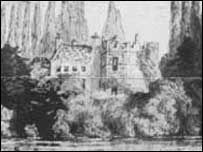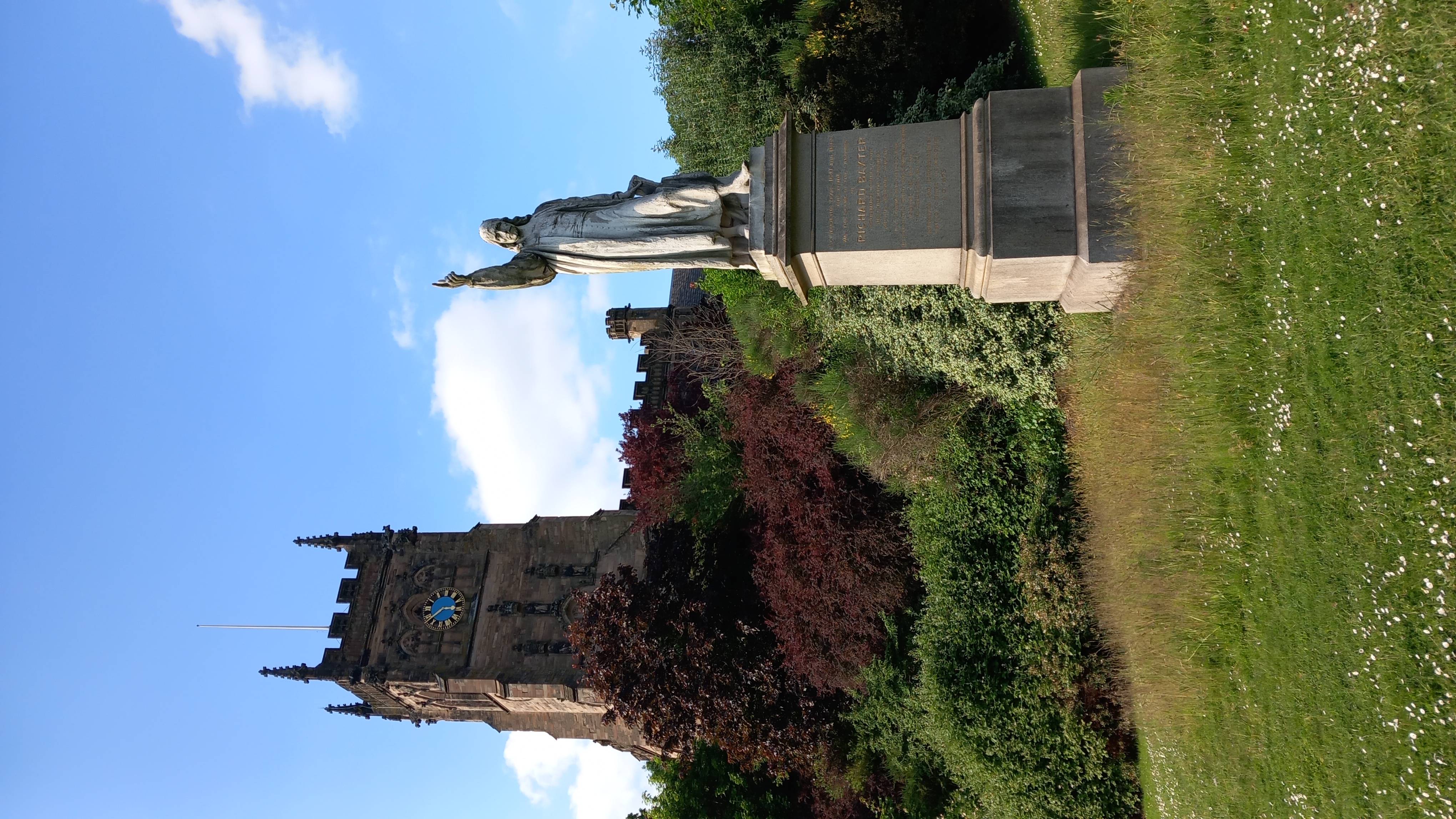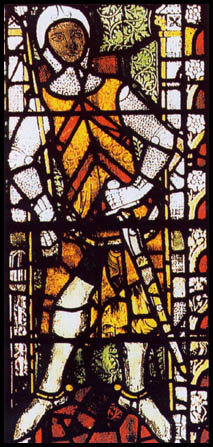|
Caldwall Castle
Caldwall Castle, also spelt Caldwell Castle and now known as Caldwall Tower, is a former manor house in the town of Kidderminster in Worcestershire, England and only a single tower remains today. It is a Grade II* listed building. The layout of Caldwall Castle, a courtyard with four surrounding towers, was likely similar to that of Stokesay Castle in Shropshire. The first structure was built during the fourteenth century, between and 1347, by Sir Hugh de Cokesay. Caldwall Castle was owned by the Cokesay family until it was passed to the Wyntour family in 1498.Emery, A (1996). ''Greater Medieval Houses of England and Wales''. Cambridge University Press, Cambridge. Under the Wyntours, the manor house was rebuilt sometime during the early fifteenth or sixteenth century and the present structure, known as Caldwall Tower, also dates to this time. The Wyntour family eventually sold Caldwall Castle in 1589 to the de Clare family The House of Clare was a prominent Anglo-Normans, ... [...More Info...] [...Related Items...] OR: [Wikipedia] [Google] [Baidu] |
Worcestershire
Worcestershire ( , ; written abbreviation: Worcs) is a Ceremonial counties of England, ceremonial county in the West Midlands (region), West Midlands of England. It is bordered by Shropshire, Staffordshire, and the West Midlands (county), West Midlands county to the north, Warwickshire to the east, Gloucestershire to the south, and Herefordshire to the west. The city of Worcester, England, Worcester is the largest settlement and the county town. The county is largely rural, and has an area of and a population of 592,057. After Worcester (103,872) the largest settlements are Redditch (87,036), Kidderminster (57,400), and Bromsgrove (34,755). It contains six local government Non-metropolitan district, districts, which are part of a two-tier non-metropolitan county also called Worcestershire County Council, Worcestershire. The county Historic counties of England, historically had Evolution of Worcestershire county boundaries since 1844, complex boundaries, and included Dudley an ... [...More Info...] [...Related Items...] OR: [Wikipedia] [Google] [Baidu] |
England
England is a Countries of the United Kingdom, country that is part of the United Kingdom. It is located on the island of Great Britain, of which it covers about 62%, and List of islands of England, more than 100 smaller adjacent islands. It shares Anglo-Scottish border, a land border with Scotland to the north and England–Wales border, another land border with Wales to the west, and is otherwise surrounded by the North Sea to the east, the English Channel to the south, the Celtic Sea to the south-west, and the Irish Sea to the west. Continental Europe lies to the south-east, and Ireland to the west. At the 2021 United Kingdom census, 2021 census, the population was 56,490,048. London is both List of urban areas in the United Kingdom, the largest city and the Capital city, capital. The area now called England was first inhabited by modern humans during the Upper Paleolithic. It takes its name from the Angles (tribe), Angles, a Germanic peoples, Germanic tribe who settled du ... [...More Info...] [...Related Items...] OR: [Wikipedia] [Google] [Baidu] |
Manor House
A manor house was historically the main residence of the lord of the manor. The house formed the administrative centre of a manor in the European feudal system; within its great hall were usually held the lord's manorial courts, communal meals with manorial tenants and great banquets. The term is today loosely (though erroneously) applied to various English country houses, mostly at the smaller end of the spectrum, sometimes dating from the Late Middle Ages, which currently or formerly house the landed gentry. Manor houses were sometimes fortified, albeit not as fortified as castles, but this was often more for show than for defence. They existed in most European countries where feudalism was present. Function The lord of the manor may have held several properties within a county or, for example in the case of a feudal baron, spread across a kingdom, which he occupied only on occasional visits. Even so, the business of the manor was directed and controlled by regular mano ... [...More Info...] [...Related Items...] OR: [Wikipedia] [Google] [Baidu] |
Red Sandstone
Sandstone is a clastic sedimentary rock composed mainly of sand-sized (0.0625 to 2 mm) silicate grains, cemented together by another mineral. Sandstones comprise about 20–25% of all sedimentary rocks. Most sandstone is composed of quartz or feldspar, because they are the most resistant minerals to the weathering processes at the Earth's surface. Like uncemented sand, sandstone may be imparted any color by impurities within the minerals, but the most common colors are tan, brown, yellow, red, grey, pink, white, and black. Because sandstone beds can form highly visible cliffs and other topographic features, certain colors of sandstone have become strongly identified with certain regions, such as the red rock deserts of Arches National Park and other areas of the American Southwest. Rock formations composed of sandstone usually allow the percolation of water and other fluids and are porous enough to store large quantities, making them valuable aquifers and petroleu ... [...More Info...] [...Related Items...] OR: [Wikipedia] [Google] [Baidu] |
Edward Bradley (writer)
Edward Bradley (25 March 1827 – 12 December 1889) was an English clergyman and novelist. He was born in Kidderminster in Worcestershire, and educated at Durham University from which he took his pen name Cuthbert Bede. His most popular book was ''The Adventures of Mr. Verdant Green'', on the experiences of an University of Oxford, Oxford undergraduate. There was a sequel, ''Little Mr Bouncer and his friend Verdant Green''. ''Tales of College Life'' (often bound with it), introduces the character of ''Mr Affable Canary''. The celebrated illustrations to the Verdant Green books were the work of the author. Life He was the second son of Thomas Bradley, surgeon of Kidderminster, who came of a somewhat ancient Worcestershire and clerical family. A brother, Thomas Waldron Bradley, was author of two novels, ''Grantley Grange'' (1874) and ''Nelly Hamilton'' (1875), while an uncle, William Bradley of Leamington Spa, Leamington, wrote ''Sketches of the Poor by a retired Guardian''. Afte ... [...More Info...] [...Related Items...] OR: [Wikipedia] [Google] [Baidu] |
Manor House
A manor house was historically the main residence of the lord of the manor. The house formed the administrative centre of a manor in the European feudal system; within its great hall were usually held the lord's manorial courts, communal meals with manorial tenants and great banquets. The term is today loosely (though erroneously) applied to various English country houses, mostly at the smaller end of the spectrum, sometimes dating from the Late Middle Ages, which currently or formerly house the landed gentry. Manor houses were sometimes fortified, albeit not as fortified as castles, but this was often more for show than for defence. They existed in most European countries where feudalism was present. Function The lord of the manor may have held several properties within a county or, for example in the case of a feudal baron, spread across a kingdom, which he occupied only on occasional visits. Even so, the business of the manor was directed and controlled by regular mano ... [...More Info...] [...Related Items...] OR: [Wikipedia] [Google] [Baidu] |
Kidderminster
Kidderminster is a market town and civil parish in Worcestershire, England, south-west of Birmingham and north of Worcester, England, Worcester. Located north of the River Stour, Worcestershire, River Stour and east of the River Severn, in the 2021 census, it had a population of 57,400. The town is twin towns and sister cities, twinned with Husum, Germany. Situated in the far north of Worcestershire (and with its northern suburbs only 3 and 4 miles from the Staffordshire and Shropshire borders respectively), the town is the main administration centre for the wider Wyre Forest District, which includes the towns of Stourport-on-Severn and Bewdley, along with other outlying settlements. History The land around Kidderminster may have been first populated by the Husmerae, an Anglo-Saxon tribe first mentioned in the Ismere Diploma, a document in which Ethelbald of Mercia granted a "parcel of land of ten hides" to Cyneberht. This developed as the settlement of Stour-in-Usmere, whic ... [...More Info...] [...Related Items...] OR: [Wikipedia] [Google] [Baidu] |
British Listed Buildings
In the United Kingdom, a listed building is a structure of particular architectural or historic interest deserving of special protection. Such buildings are placed on one of the four statutory lists maintained by Historic England in England, Historic Environment Scotland in Scotland, in Wales, and the Historic Environment Division of the Department for Communities in Northern Ireland. The classification schemes differ between England and Wales, Scotland, and Northern Ireland (see sections below). The term has also been used in the Republic of Ireland, where buildings are protected under the Planning and Development Act 2000, although the statutory term in Ireland is "Record of Protected Structures, protected structure". A listed building may not be demolished, extended, or altered without permission from the local planning authority, which typically consults the relevant central government agency. In England and Wales, a national amenity society must be notified of any work to ... [...More Info...] [...Related Items...] OR: [Wikipedia] [Google] [Baidu] |
Stokesay Castle
Stokesay Castle is one of the finest surviving fortified manor houses in England, and situated at Stokesay in Shropshire. It was largely built in its present form in the late 13th century by Laurence of Ludlow, on the earlier castle (some of which still survives) founded by its original owners the de Lacy family, from whom it passed to their de Verdun heirs, who retained feudal overlordship of Stokesay until at least 1317. Laurence 'of' Ludlow was one of the leading wool merchants in England, who intended it to form a secure private house and generate income as a commercial estate. Laurence's descendants continued to own the castle until the 16th century, when it passed through various private owners. By the time of the outbreak of the First English Civil War in 1642, Stokesay was owned by William Craven, 1st Earl of Craven (1608–1697), a supporter of King Charles I of England, Charles I. After the Royalist war effort collapsed in 1645, Parliamentary forces besieged the castle ... [...More Info...] [...Related Items...] OR: [Wikipedia] [Google] [Baidu] |
Shropshire
Shropshire (; abbreviated SalopAlso used officially as the name of the county from 1974–1980. The demonym for inhabitants of the county "Salopian" derives from this name.) is a Ceremonial counties of England, ceremonial county in the West Midlands (region), West Midlands of England, on the England–Wales border, border with Wales. It is bordered by Cheshire to the north-east, Staffordshire to the east, Worcestershire to the south-east, Herefordshire to the south, and the Welsh principal areas of Powys and Wrexham County Borough, Wrexham to the west and north-west respectively. The largest settlement is Telford, while Shrewsbury is the county town. The county has an area of and a population of 498,073. Telford in the east and Shrewsbury in the centre are the largest towns. Shropshire is otherwise rural, and contains market towns such as Oswestry in the north-west, Market Drayton in the north-east, Bridgnorth in the south-east, and Ludlow in the south. For Local government i ... [...More Info...] [...Related Items...] OR: [Wikipedia] [Google] [Baidu] |
De Clare
The House of Clare was a prominent Anglo-Norman noble house that ruled the Earldoms of Pembroke, Hertford and Gloucester in England and Wales throughout its history, playing a prominent role in the Norman invasion of Ireland. They were descended from Richard Fitz Gilbert, Lord of Clare (1035–1090), a kinsman of William the Conqueror who accompanied him into England during the Norman conquest of England. His great-grandfather was Richard I of Normandy who was the son of William Longsword and the grandson of the Viking Rollo. As a reward for his service, Richard was given lands in Suffolk centred on the village of Clare. As a result, Richard and his descendants carried the name of 'de Clare' or 'of Clare'. The de Clares ranked among the greatest baronial houses of the early Middle Ages and were the proprietors of the monumental Caerphilly Castle, Pembroke Castle, Castell Coch, and over 190 manors in England. Origins The Clare family derived in the male line from Gilb ... [...More Info...] [...Related Items...] OR: [Wikipedia] [Google] [Baidu] |








